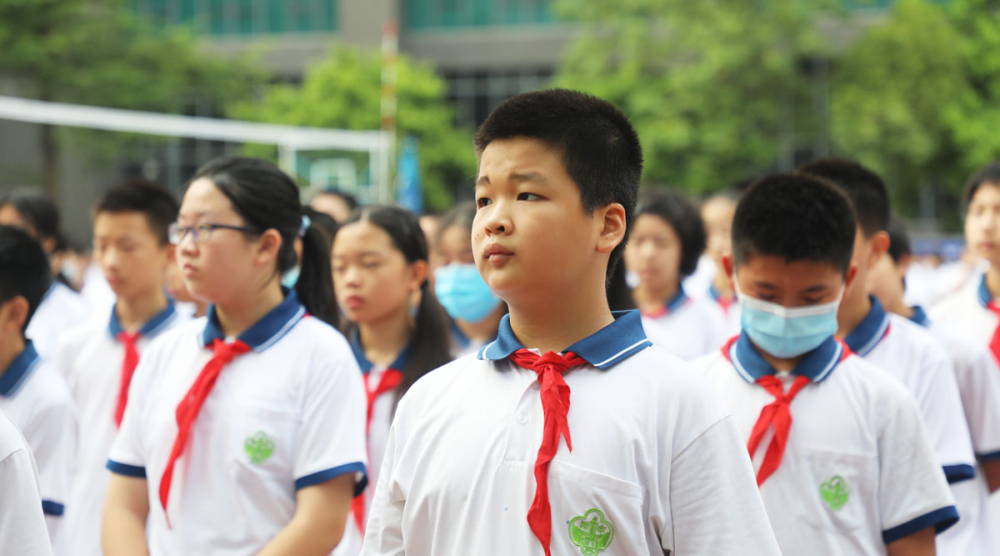校园垃圾分类的几点建议
老师,同学们,大家好!
我是初二8班林宙霏。今天我讲话的题目是:校园垃圾分类的几点建议。

同学们,你们曾在学校垃圾桶前彷徨过吗?你有因为垃圾分类被学生会扣过分吗?你有因为垃圾分类错误陷入深深的自责过吗?垃圾分类是如今社会一大话题,学校一大话题,也是我们中附校园的一大话题,想必很多同学都曾经在分类垃圾桶前犯选择困难症。“纸巾我该扔哪?”“奶茶杯我又该扔哪?”
垃圾分类(英文名为:Garbage classification),一般是指按一定规定或标准将垃圾分类储存、分类投放和分类搬运,从而转变成公共资源的一系列活动的总称。分类的目的是提高垃圾的资源价值和经济价值。
可回收物主要包括废纸、塑料、玻璃、金属和布料五大类。其他垃圾(上海称干垃圾)包括除上述几类垃圾之外的砖瓦陶瓷、渣土、卫生间废纸、纸巾等难以回收的废弃物及尘土、食品袋(盒)。卫生填埋其他垃圾可有效减少对地下水、地表水、土壤及空气的污染 。厨余垃圾(上海称湿垃圾)包括剩菜剩饭、骨头、菜根菜叶、果皮等食品类废物。生物技术就地处理这些垃圾为堆肥,每吨可生产0.6~0.7吨有机肥料。有害垃圾指含有重金属、有毒物质或者对环境造成现实危害或者潜在危害的废弃物,包括电池、荧光灯管、灯泡、水银温度计、油漆桶、部分家电、过期药品及其容器、过期化妆品等。这些垃圾一般使用单独回收或填埋处理。
在我们学校,每个班都有其他垃圾桶和可回收垃圾桶。各班值日生每天都把垃圾分好类放到垃圾场,学生会会检查垃圾分类,这个体系似乎天衣无缝,但其实其中漏洞很多。就拿我们自己班来讲,上学期,我们班的三个垃圾桶就被封掉了两个,因为我们垃圾分类扣分过多,干脆封掉了垃圾桶,所有垃圾全放在了其他垃圾桶中,这个行为治标不治本。还有学校的总垃圾站,虽然我们会分类去丢垃圾,但事实上,环卫工人们还是全部堆在一起扔掉。这样并没有真正的在实施垃圾分类,不过就是掩饰着继续像以前那样扔垃圾。所以,我对学校和同学们提出几点建议。
首先,调整学校分类垃圾桶,不将其分为其他垃圾和可回收垃圾,只需要每个班放置三个垃圾桶,分别放废纸,纸巾和塑料瓶。其次,学校总垃圾场的分类也加以管制与调整。仍然放置四种垃圾桶,但在其他垃圾桶和可回收垃圾桶上标好废纸、纸巾和塑料瓶分别放那。最后,每个同学尽力的少制造垃圾。班级垃圾桶方面出现任何问题及时汇报。学生会的同学也加强检查垃圾分类问题。
我的讲话到此结束,谢谢大家。
Some Suggestions to the Garbage classification in our school
Rongyue Zhang, Zhoufei Lin,Class 8, Grade 8
Dear teachers and students:
Greetings!
I am zhangrongyue and Linzhoufei from class 8, grade 8. I am a member of the project from “Gemeinsam für die Zukunst”, a competition set up by the German Goethe institute. Our purpose today is to share some ideas about the garbage classification on our campus.
Have you ever wavered amongst the garbage bins in your classroom? Did your class’s point ever being taken off because of wrong classification? Did you ever blame yourself for making this kind of mistakes? Garbage sorting is one of the most popular topic in our communities. A lot of you probably have being torn by these blue or grey bins: “where should the tissue goes?” “where should the bubble teacups go?” In fact, a lot of people are confused too. According to one of our survey, 90% of the people alleged that they didn’t classify the waste because they didn’t know how.
First, please let me introduce the garbage classification. This is an overall term of the act of storing, classifying and shipping the waste by local standards, thereby changing it to public resources, so as to improve these garbage’s values. In our country, the common version of garbage types is “recyclable” “organic” “e-type” and “other waste”. Recyclable rubbish is mainly wastepaper, plastic, glass, medals and cloth. Other garbage includes building debris, tissues and others like dirt, thin plastic bags that are hard to recycle. Usually, this kind of garbage goes into landfills. This method is able to effectively reduce the pollution to our underground water resource. Another type of garbage is called organic, which predominately are foods. Leaves are also included in this type of waste. Biological technology can turn this variety of garbage directly into fertilizer. It is worth mentioning that if organics are disposed goes into landfills, they have high possibilities to pollute the land. E-type of wastes are those contain heavy medals, or poisonous ingredients that might harm the environment, such as some batteries, light bulbs, mercurial thermometer, etc. These kinds of garbage are recycled or goes in to landfills separately.
On our campus, there are a garbage bin for other waste, and one for the recyclable in each classroom. Every day, the students should sort the garbage and throw them to the area for refuse storage. The student’s union is responsible for supervision . This system, however, seems perfect, is actually full of problems. For example, last semester, in order to avoid more point being taken off, some classes abandoned the bin for recyclable wastes. Others points out that although the workers have sorted out the plastic bottles and cans sometimes, most of the times they just throw all kinds of waste without classifying. This shows that the rules in our school should improve. Here are some of our suggestions:
Firstly, make the classification more specific, so it is easier for us to classify our garbage. For instance, many schools around the world set three bins: one for wastepaper, one for tissues and other wastes, and the other for the plastic bottles. Moreover, the refuse station should also be adjusted, using the system aforementioned. Lastly, to students like us, we should produce as less waste as we can; report if there are any problems to the bins. The student union should reinforce the management of garbage classification, too.
If we all worked together, we can make thing better. Thank you for listening.





